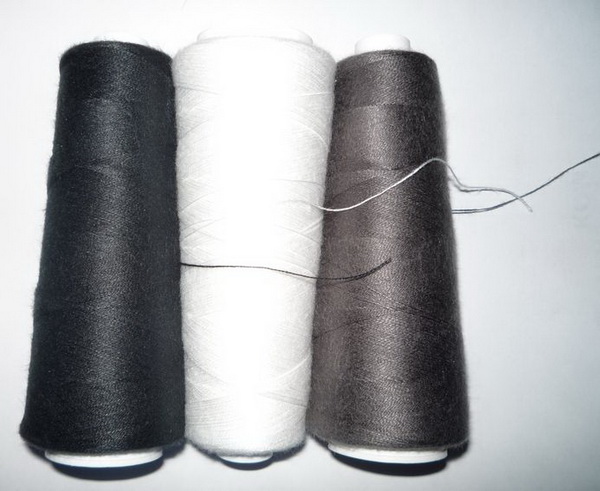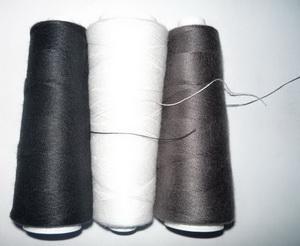Original text by Marina Belova
When I began experimenting with acrylic threads to achieve a fringe effect, it became obvious that I didn't know a thing about wool-like threads and how to embroider with them. And this thread is a fascination indeed! So many ideas come to mind when you look at it.

In order to save time and to avoid reinventing the wheel, one wants to find clear instructions or recommendations on how to work with it. As usual,
I surfed the Web. I must say that even Google was of little help in solving questions that arose. But I managed to find something useful.
If I do understand correctly, you can buy an acrylic/woolen thread of only two brands here in Russia: Madeira and Gunold. There are two Madeira threads of this kind, Burmilana, and Lana. The first one is composed of 70% wool and 30% acrylic, and the second one of 50% wool and 50% acrylic. Filain from Gunold is 100% acrylic. All of them look pretty much the same.
All of the general recommendations on the embroidery with wool-like threads, drawn from a variety of sources, can be distilled down to the following:
- Use thicker needles. Gunold recommends 90/14 and Madeira – 100/16. But the most common advice is to use a 110/18 needle.
- Madeira produces a special needle called Lana that has a bigger eye.
- Schmetz recommends using an FHS (Fixed Hook Setting) needle with a deep-seated flat side that doesn't require the adjustment of the hook.
- Because of the high yarn hairiness, it is strongly recommended to clean the machine from the litter that accumulates during the embroidery.
- In order to thread a needle with this thick thread, tie it to the one that is already in the needle's eye and that you want to replace, with a flat knot, and just pull it through.
- The funny thing is that I didn't find any instructions on tension adjustment for thick threads. Some people advise loosening the upper thread tension and some — to tighten it up. Looks like I'll have to experiment.
- Bobbin thread tension should not be loosened, just leave it as if you were using the ordinary threads.
- Lower the speed a little
- Don't forget to use an appropriate stabilizer
- Embroider as usually
- After the embroidery, you may try to brush the threads in order to fluff them up
Digitizing designs
- Stitch density should be no less than 0.9–1 mm
- Remove all short stitches
- Increase the stitch length to at least 8 mm
- No or minimal understitching of a very low density and with long stitches
There is a curious recommendation to increase the size of a design, created for an ordinary #40 threads, by 20% without stitch recount. This is true both for the ordinary designs and the cross stitch designs. You can do it without the embroidery software, right on your machine.
Nothing better than your own experience in this case. I'll play with crewel work technique when I have time.
And if you don't want to be confined to the theory, here is my article on how to embroider with a woolen thread.
Edited by Irina


There are no reviews to display.